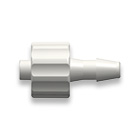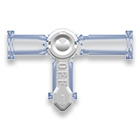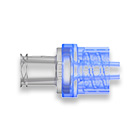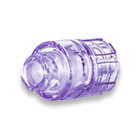Providing Secure Connections
In interventional surgical applications, which often involve minimally invasive procedures guided by imaging techniques, luers, stopcocks, check valves, and swabable valves play crucial roles in ensuring precision, control, and safety throughout the intervention.
Luer Fittings
Luers are essential connectors used to create secure and leak-proof connections between various medical devices, such as catheters, guidewires, and syringes. In interventional surgery, where access to specific anatomical sites is achieved through small incisions or catheterization, luers facilitate the attachment and detachment of devices. The standardized luer lock mechanism ensures a secure fit, preventing accidental disconnections during critical procedures like angioplasty or catheter-based interventions.
Shop Luer Fittings
Stopcocks
Stopcocks are employed to control the flow of fluids within the interventional system. They allow the surgeon to regulate the infusion or withdrawal of fluids with precision. During procedures like embolization or angiography, where contrast media or therapeutic agents are delivered through catheters, stopcocks enable the adjustment of fluid flow rates. This control is crucial for achieving optimal imaging, maintaining hemostasis, or delivering therapeutic substances to specific target areas.
Shop Stopcocks
Check Valves
Check valves are designed to permit fluid flow in one direction only, preventing backflow. In interventional surgery, where maintaining controlled and unidirectional flow is essential, check valves play a vital role. They prevent the retrograde movement of blood, contrast media, or other fluids, ensuring the accuracy of diagnostic imaging and the success of therapeutic interventions. Check valves are particularly valuable in vascular procedures, such as stent placement or embolization, where maintaining proper blood flow direction is critical.
Shop Check Valves
Needlefree Swabable Valves
Swabable valves provide sterile access points for medication administration or sample collection without compromising the integrity of the interventional system. In procedures like percutaneous transluminal angioplasty (PTA) or central venous catheterizations, swabable valves allow healthcare providers to maintain a sterile field while easily accessing the vascular system for interventions, reducing the risk of infections and ensuring patient safety.
Shop Needlefree Swabable Valves





